Controlling Aphids Naturally
Aphids and Nitrogen
Aphids are one of the perennial pests that gardeners deal with, often with very mixed results. What works one year seems to fall flat on its face the next, with the reverse also being true. Aphids are tiny, soft bodied insects that have piercing, sucking mouthparts to feed on plant saps. They live in colonies, most often the underside of leaves and where the tender young growth is on a plant.
By themselves, aphids rarely outright kill a plant but they can inflict serious damage to both its flowers and fruit. It only takes a few aphids sucking on a young flower or fruit to weaken it or damage it beyond being edible. The sap they extract weakens the plant, stunting its growth and food production. The aphids can also be carriers or vectors of diseases or viruses, which they infect the plant with as they pierce the cell walls and extract the plant sap. Just a few seconds is all it takes for a virus to transfer from the mouth of an aphid to the plant.
Aphids will often arrive in a garden or on a plant by flying in. A small number will arrive and leave their wingless young who feed on the plant and immediately lay eggs, increasing the population quickly. The adults will then fly off and repeat this several times. This is why gardeners will often complain that the aphids overwhelmed the garden “overnight”. Each adult aphid can produce up to 80 offspring every week!
So what can be done about these insects? There are several methods of dealing with them, broken down into two main approaches – prevention and treatment. The prevention phase happens in the fall and early winter with soil testing and amendments that set the stage for success the next growing season. Treatment is just that – what to do when those pesky insects show up uninvited in your garden!
Aphids Love Nitrogen
Let’s start at the beginning, shall we? Nitrogen is a big, big player in the aphid dance. Aphids love nitrogen, plain and simple. They are attracted to the soft growing parts of a plant that are high in nitrogen, as it is a major factor in plant growth. Aphids are also really attracted to young seedlings, since everything on a seedling is growing and there is lots of nitrogen to be had.
Nitrogen plays a very important part in a plants growth as well as the content of its sap. Soils with excessively high nitrogen create very fast growing plants. This leads to rapid cell wall growth, which are elongated, thinner and much easier for the piercing mouth-parts of an aphid to penetrate than normal. The plant sap will also be high in nitrogen and will be especially attractive for the aphid. It is very important to understand that high nitrogen sap will be lower in overall sugar content – also known as brix – because nitrogen forms amino acids and proteins – such as chlorophyll – but specifically needs magnesium, phosphorus and carbon to form sugars. This can’t happen if there is excess nitrogen, as there aren’t enough of the other elements to form those sugars. Once the soil is amended with the correct nutrients, the plant will increase the brix/sugar levels and the aphids will die from sucking high sugar content plant sap as it is deadly – aphids can’t digest the sugars with no pancreas and thus die.
What all this means is that using high doses of chemical fertilizers will encourage aphids to call your garden home! Almost all commercial fertilizers are high in nitrogen and release their nutrients much faster than compost or other soil amendments, making aphid pressures much worse than they would normally be. They also contribute to lots of flowers with little fruit production or stunted and smaller than normal sized fruit.
It is interesting to note with soybean studies at Penn State University naturally occurring nitrogen-fixing bacteria – called rhizobia – provided a better form of naturally occurring nitrogen than the laboratory bred inoculated strains did. Plants growing in the naturally occurring rhizobia soils had markedly fewer aphids and stress than the inoculated ones. The amount of nitrogen provided by the lab developed rhizobia and the naturally occurring strains were the same, with the natural rhizobia having much lower aphid populations on the plants. They are continuing the study to see why this happens.
There is a concept at work here that we need to briefly discuss so that you can understand where we are going from here. The “Law of the Minimum” shows how interrelated many nutrients and elements are to healthy plants, not just the N,P and K that are listed on fertilizer bags.
The Law of the Minimum states,
“Plant growth is determined by the scarcest, “limiting” nutrient; if even one of the many required nutrients is deficient, the plant will not grow and produce at its optimum.”
Prevention and Preparation
The preventative method is to have a complete, comprehensive soil analysis done by a professional lab. I’ve mentioned these before, but they bear another – Crop Services International and Texas Plant and Soil Lab are great labs. They are thorough, friendly and will give you the info you need at a reasonable price. From this analysis, you will know exactly what soil nutrients, amendments and trace minerals are needed to eliminate a high nitrogen condition in your soil and plants, and by extension reducing the population and attraction of aphids.
Another, very simple method is to stop using commercially available chemical fertilizers! Without naming names, these come in a bag and sometimes have the word “miracle” attached to them. There are a number of brands that can be bought at any garden center or big box store in their garden section. Well-aged and decomposed compost – especially if you’ve worked with it how we discuss in our articles on compost – will give you a continuous supply of “soil food” to apply to your garden twice a year, in the early spring and again in the late fall. This compost with the amendments will slowly release the nutrients that the garden needs, along with attracting the biological elements in the soil that do the real work – earthworms, pillbugs, beneficial nematodes, fungi and all sorts of other hard-working critters that seriously improve the soil on a continuous basis.
Another aspect of prevention is cultural control, or removing the suitable environments where aphids can overwinter or establish an initial population to then swarm your garden. Standing weeds can be harbors of aphids, so remove them and remove dead plants from the garden in the fall. Don’t wait until the springtime to clean up the garden, as this can provide the perfect habitat for aphid eggs to be sheltered under. Inspect trees and bushes for aphid eggs in the fall, remove them by hand, vacuum or with a strong blast of water.
Treatment Options
Now that you’ve got the prevention and preparation covered, what can be done if and when the nasty aphids arrive? This is where the treatment portion comes in, and it would be wise to prepare for this as well. Early detection is very important for successful treatment, as if the aphids get a toe-hold, it will be much more difficult to rid your plants of several sizable populations instead of just one or two small ones. The incoming flights of adult aphids are random, so consistent inspection is best. This is very easy, just flip over the top, youngest leaves of several plants and look for the clusters of small aphids on the underside. Look around bud areas as well. If you see any aphids, they will be in small clusters or colonies and can be easily dealt with at this stage. Crush them by hand or prune the leaves or buds to remove them. Once you see the first small populations, go back and be very thorough with the rest of your plants, taking the time to examine them well. Trust me on this, the time spent now will save you much heartache, back ache, time and frustration in the very near future!
Aphids will excrete “honeydew” – a sweet, sticky substance – and is sometimes fed on by ants. This isn’t always the case; but in your inspections look for travel pathways of ants up and down the plant where the aphid colonies are. Sometimes the ants will lead you to the aphids that you would have otherwise missed.
Anytime you see any aphids, it is a good practice to set out yellow sticky traps. Aphids are highly attracted to the color yellow, which lures these little monsters into the traps. They are available at most garden centers and will be in squares or strips. Place several of them in the area where you find the aphids, and put out a few more than you might think. They are good inexpensive insurance.
If the aphids have colonized more than about 5% of the bud and young leaves of a plant, or are on more than that amount of your total garden plants, then it’s time for the next round of action.
Beyond physically removing the aphids, there are two approaches to treatment – biological and chemical controls. Biological controls use biology – predatory insects – to eat and control the aphids. Chemical controls are just what they sound like – using sprays of varying toxicity to reduce the aphids’ population.
Using the biological approach first combined with a non-toxic soapy spray is often the knockout punch needed for smaller aphid infestations. Releasing parasitic wasps that lay their eggs inside the aphids, ladybugs, lacewings, soldier beetles and the syrphid fly larvae are all highly effective if done in time, before the aphids’ population explodes. One of the best resources for biological controls is Arbico Organics. They will help you decide what species will work best for your garden situation, how many to release and how many times. Keep in mind that the goal is not to completely eliminate every single aphid, as then the beneficial and predatory insects won’t have a food source. The goal is to keep the aphids controlled, where they aren’t damaging the plants.
Remember, weather can be on your side when dealing with aphids. Heat and high humidity can really knock them back as they are fairly fragile and die off in droves when temperatures are over 90°F.
Soap sprays work by smothering the aphids by coating their skins. Start with a completely harmless soapy water spray like Dr. Bronner’s – using a tablespoon per half gallon in a hand sprayer. Make sure to apply the spray when beneficial insects aren’t around, as they will also be affected. From there, work up to an insecticidal soap like Safer Brand or horticultural oil such as neem oil. With both of these approaches, make sure to cover the underside of the infested leaves well for the smothering effect to work. These are contact controls, and depend on contact with the aphids to work, so they will need to be re-applied as often as needed until you’ve gotten control of the situation. This could mean once a day for a few days, then twice a week for a week or so, then tapering down to once a week. It might well take 2 – 3 weeks to really get a handle on persistent outbreaks, so be patient but persistent!
Moving up the toxicity ladder, multi part sprays such as our Home Garden Bug Solution work very well, but need to be used carefully as they do have a high level of insect toxicity even though they are made with no petrochemical ingredients. If you do need to bring out these big guns, test in a small area to see the effects before spraying your entire garden!
Hopefully you now see that there are a number of ways to reduce and control the pesky aphids in your garden. It all starts with prevention and preparation with improving the soil and balancing the nutrients it needs. From there you now have several new tools in your “pest control” toolbox to help you manage aphids in your garden next growing season.

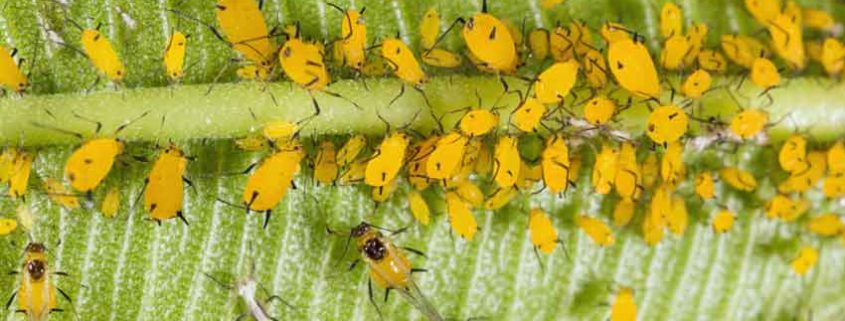
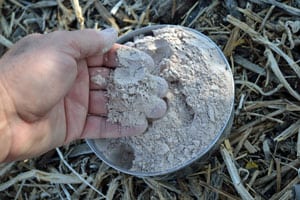


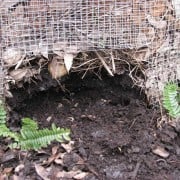
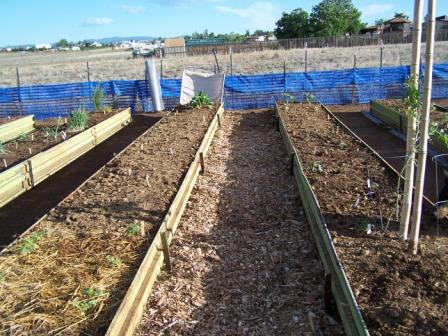

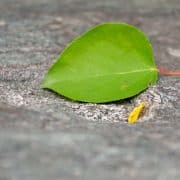
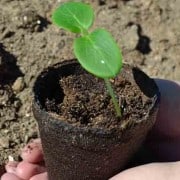
Since it is terribly difficult to control aphids in a very complex environment, we rely on trap species of vegetables to minimize depressing populations on the crucial, high-dollar cash crops to fairly significant levels. I enjoyed your explanation of aphids and their propensity for lush rapid growing plant parts. I certainly will pay more attention to the brix levels in hopes of increasing the sugars to aphid-lethal levels. That said, it is still tricky to adjust all the soil specifics for the various vegetables, the need for crop rotation while harvesting some things in less than fifty days while others needing more than ninety. This challenging chess game is what keeps gardeners, farmers and ranchers so thoroughly engaged Thank you.
You are absolutely right Nannette, it is a challenging chess game! Even more so when you are producing crops for the public, instead of growing them for your own consumption. Thanks for sharing your experiences with us!
Something to think about…
As we know. Calcium (Ca) is the basic building-block for plant cell structural strength. We also know that plants short in Ca (often, accompanied by excess N) – causes them to be susceptible to a plethora of problems – most often caused by weak cell walls.
BUT – did you know that plant-available Silicon (Si) can have even more effects against bugs & disease? Si is the basic element of glass – very hard. Trials have demonstrated that plants high in Si show remarkable resistance to bugs – but also to nematodes and disease.
Si has also demonstrated a variety of benefits to the soil.
Making cell walls harder discourages bugs and disease – the bugs get tired of trying to get through it, while research suggests that molecule-thick layers on the root-hairs blocks nematodes and at least some diseases – but there are many other side-benefits [to the soil], as well..
We have started recommending Si as a part of our commercial fertility programs (especially when there are disease/bug/nematode issues), as well – because we’ve seen so many unanticipated benefits.
But, here’s the problem: We generally deal with large operations – and many of the adjuvants we recommend are available only in bulk (and expensive) large quantities. Consider, for example, this writer buys a Si product at the minimum volume of five gallons at a time – but the application rate is 10 oz/acre. The cost for a five-gallon shipment? About $900. I’ll go through that in less than a year. BUT if you’re a homeowner, that presents perhaps a bit of a budgetary problem…
The fact is, there is a lot of really cool (biologically-friendly & highly-effective) stuff which, if you’re a small grower, you’ll never see in the garden center…
So, I guess the point of this little message is, there are really cool things that are cheap (if you’re big enough) to deal with many bug (and other) problems – but I can’t see the solutions becoming available (in micro-quantities) at your neighborhood garden center, anytime soon… Plus, you kinda need to know what you’re doing and maybe need some precision equipment when you apply these things…
And I’m not talking some kind of Draconian, turn-you-into-vapor-just-by-looking-at-it chemicals, here. I’m talking some organic/
amino acid, etc., soil microbe & plant-friendly stuff…
After the dust has settled and the smoke has cleared, it all really comes down to pretty much soil fertility & soil biology.
Being in the business of saving farms by fixing “impossible” problems and making growers extraordinary crops for now, 76 years, that approach seems to have not worked out too badly.
Hi, I was taught that after the first overwintered hatch, they are all female and born ‘pregnant’ with every new aphid bearing live young upon maturing (three or four molts) and then in late fall a percentage are born male, and some females are winged and they mate, the eggs get laid, which then over winter and repeat. The females bearing live young that are capable of bearing live young and so on during the growing season, is how the infestation happens so so fast. Did I learn incorrect information?
Thanks for more insight Frank! We will move more into these topics as we go more in-depth into the soil fertility, but I agree whole-heartedly that soil fertility is at the basis of everything!
Hi Stephen, interesting article and I’ll try to remember to link to it in spring when aphids get active here.
I ordered a $12 Bug Blaster last spring:
“he Bug Blaster creats a 360 degree flat spray annihilating insects and their eggs from the undersides and tops of leaves. Use it to blast full-pressure water into the center of plants, where insects hide.”
This year we really only had an aphid problem on our kale. Occasionally I get wet a little due to the 360 degree spray, but it worked great. In combination with regular harvest (or disposal) of the lower leaves, aphids were not a problem.
Also, it was great to see you at the expo in Kingman and I’ve started on my spring seed order. Found the bulk section.
Are you going to get more Indigo?
Christine
Thanks Christine, please let us know how it works for you next year!
I don’t know if we will have Indigo next year, but maybe in 2016.
From what I’ve researched, in milder climates the females will reproduce asexually throughout most of the year, giving birth to live offspring without mating – usually 8 – 12 per day. In colder climates, mating occurs and eggs are laid in protected areas to survive the winter. The aphids nymphs mature to a reproducing adult in about 7 – 8 days. The adults will mate and can produce up to 80 nymphs a week.
There are several different strains of aphids, each with a slightly different lifespan and reproductive pattern so you may well be correct for your area!
Hi Stephen. Regarding those yellow sticky pads. . .
Just finished your article and learned a lot. Also appreciate everyone else’s comments. Just wanted to share something. I too, liked the yellow, sticky traps and used them until I experienced an unfortunate incident.
We found a sparrow, obviously trying to help control the aphid population, stuck “spread eagle” to a sticky pad. I was mortified! I had to use a razor blade to carefully cut his feathers from the pad. Thankfully, he flew away after the ordeal. I posted a photo on my Facebook page to share my experience. We also found a gecko and lizard stuck to other pads– they didn’t survive. I love those pads but I never want to go through that again. I will be sure to try some of the suggestions from your article that are a little less likely to upset my ecological apple cart.
JoLee, thanks very much for sharing this! There can be unintended consequences to be aware of, so this will help others decide if they want to use the sticky traps if they have birds and reptiles sharing their gardens.